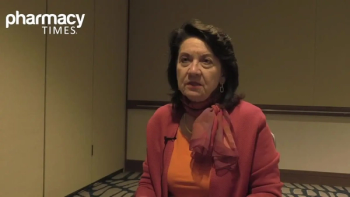Oral endocrine drugs have shown to significantly improve the therapeutic treatment strategy for breast cancer, but despite their benefits, adhering to and persisting with oral anti-cancer treatments can be a significant challenge for patients. When receiving treatments for cancer, some patients may find difficulties managing complex regiments or negatively perceive treatment effectiveness. To better understand issues and main risk factors in treatment adherence and persistence, authors of a study published in JAMA Network Open evaluated issues of contributing to the inability to adhere or persist with endocrine therapy when managing localized breast cancer.
A total of 229,695 female patients with early breast cancer and a median age of 63 years (range: 52 to 72 years) were enrolled in this retrospective cohort study. The analysis includes unbiased data from the French National Health Data System (SNDS) database between January 2013 and December 2018. Additional data included in the analysis that the authors believed may be helpful included hospitalizations, drug purchases (plus box details that includes the number of pills and dosage), consultations, and contextual patient information (eg, age, French state medical aid beneficiary status, and city of residence). The authors note that the study adheres to the Strengthening the Reporting of Observational Studies in Epidemiology (STROBE) reporting guidelines to ensure both transparent and comprehensive reporting of its modeling.
In this study, persistence was defined as the continuation of taking prescribed medication for the intended duration of treatment, and nonpersistent events were detected based on when the patient began taking the treatment and if it aligned with the expected end of treatment. Whenever a patient purchased her medication, the investigators checked whether the next purchase for the treatment happened before or after an alarm date (defined as the estimated days of supply covered by the purchased box, plus a fixed margin of 90 days). If the purchase occurred after the alarm date or if it did not happen, then the persistence phase was considered over. Days in the hospital were not considered based on the assumption that patients received appropriate care during their stays, according to the authors.
Additionally, patients were considered nonadherent if their medical possession ratio (MPR) fell below 80%. The researchers predicted nonpersistence and nonadherence during a 180-day duration, with events being evaluated every 90 days.
The patients were followed up after 5 years from the first endocrine drug purchase. According to the findings, approximately 17% of patients with breast cancer on endocrine therapy developed nonpersistence, and 41% developed nonadherence. Additionally, the developed models estimated that risk of treatment discontinuation and nonadherence with AUROCs of 0.71 and 0.73, respectively. The authors noted that some significant contributors to nonpersistence were past adherence, age, income, as well as the number of different treatments that were purchased. For nonadherence, past adherence and adherence regularity were important, with younger patients more likely to be nonadherent than older patients.
Further, the authors noted that these findings were similar to prior research. Specifically, the authors said that prior research on patients taking oral anti-cancer treatments found that nonpersistence was higher in younger patients and in those with lower adherence regularity. Additionally, past adherence and income were also significant contributing factors. These data also indicated that there was an influence of season on nonpersistence because patients reported being more likely to miss doses during the summer months or vacations; however, this factor is conflicting across different studies.
Key Takeaways
- Challenges in Endocrine Treatment Adherence and Persistence: The study found that a significant portion of female patients with localized breast cancer struggle with adhering to and persisting with oral endocrine therapy. Approximately 17% of patients experienced nonpersistence, while 41% were nonadherent, highlighting the challenges in maintaining long-term treatment regimens.
- Key Influencing Factors: Key factors influencing nonpersistence and nonadherence included previous adherence behavior, patient’s age, income, and the number of different treatments purchased. Younger patients and those with lower adherence regularity were found more likely to be nonadherent. The authors also found that seasonal variations, such as summer months or vacations, also contributed to higher rates of nonpersistence, but this finding varied across different studies.
- Potential Role of Telemonitoring: The integration of telemonitoring systems presents a promising solution to improve patient adherence and persistence. By providing real-time monitoring and early intervention, the investigators believe that telemonitoring can offer more individualized support to patients and optimize resource allocation within health care settings. The authors emphasize that future research, likely in the form of clinical trials or prospective research, should explore the impact of telemonitoring on treatment adherence and persistence.
In addition, the integration of telemonitoring systems offers advantages for health care providers monitoring oncology patients. For example, providers can monitor patients in real-time and intervene early to reduce the risks of nonadherence and nonpersistence. Additionally, telemonitoring may provide patients with more individualized support and treatment plans, while optimizing resource allocation in health care settings.
According to the study authors, limitations include the limited data on health insurance reimbursement data as well as a potential bias when projecting adherence classification (measured in pharmacy claims data) for patients who fill their prescriptions, but are not always taking them. Additionally, the authors note that overall accuracy is assessed at the study population level but there is heterogeneity within the population, therefore, there may be individual patient factors contributing to adherence that are not taken into consideration. Similar to other studies, the investigators note that medication adherence was measured indirectly in patients by using the days of supply, however, there is a possibility for adherence misclassification, notably in patients who made significant changes to their treatments.
Although the study findings found that the risk of nonpersistence and nonadherence among female patients with localized breast cancer was likely influenced by age, past behavior, and the number of treatments. The authors suggest that future research, particularly in the form of a clinical trial or prospective evaluation, should take telemonitoring or patient tracking methods into consideration. These data could help further assess the outcomes of technological innovations and their influence on nonadherence and nonpersistence.
Reference
Rinder, P, Marcille, T, Sinel-Boucher, P, et al. Dynamic Projection of Medication Nonpersistence and Nonadherence Among Patients With Early Breast Cancer. JAMA Netw Open. 2024;7(5):e2411909. doi:10.1001/jamanetworkopen.2024.11909



















































































































































































































